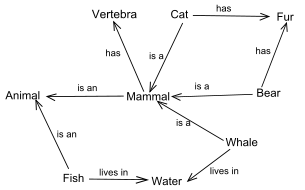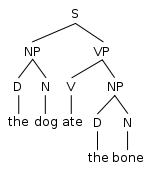Key Difference – Semantic vs Syntactic
When we speak of languages, semantic and syntactic are two important rules that need to be followed although these refer to two different rules. Hence, one should not consider these two as interchangeable. In any language, we need to follow certain rules or else principles so that we can communicate effectively with others. If we do not follow these rules, it becomes difficult to comprehend what we say. Semantic focuses on the meaning of words. On the other hand, syntactic focuses on the arrangement of words and phrases when forming a sentence. As you can see, there is a key difference between semantic and syntactic as each focuses on a different component in language. This article attempts to clarify the difference in detail.
What is Semantic?
The word semantic is an adjective that can loosely be defined as ‘to do with meaning’. From this definition, it is clear that semantic emphasizes the significance of the meaning of words, phrases, etc. In linguistics, we specifically highlight the significance of the semantic rule. This is why there is a specific field of study known as semantics. Semantics refers to the study of the meanings of words.
The meanings of words play a key role in communication. This is why in every language there are specific definitions or meanings of words so that there would be no confusion over their meaning. Imagine a context where a single word has a number of meanings. This would make communication extremely difficult because people become confused as to what exact meaning the speaker is referring to.
Let us take an example to comprehend the significance of meaning in communication.
You killed it.
This could simply denote that the individual has killed something, such as an animal. But put the same sentence in the context of a musical performance. Here a person could say ‘you killed it’ to emphasize that the individual performed very well.

What is Syntactic?
Syntactic can be defined as to do with the arrangement of words and phrases when forming a sentence. In linguistics, the syntactic rule is also considered as an important rule because in order to bring out the meaning the arrangement of the sentence has to be accurate. If not, although the words are there the sentence fails to bring out the correct meaning.
Only John said he wants to write the first chapter.
John said he only wants to write the first chapter.
Look at the examples above. Although the words are identical, two meanings emerge from the sentences. In the first, the stress is on the person who wants to complete the task, but in the second, it is on the task at hand.

What is the difference between Semantic and Syntactic?
Definitions of Semantic and Syntactic:
Semantic: Semantic can be defined as to do with meaning.
Syntactic: Syntactic can be defined as to do with the arrangement of words and phrases when forming a sentence.
Characteristics of Semantic and Syntactic:
Adjective:
Semantic: Semantic is an adjective.
Syntactic: Syntactic is also an adjective.
Focus:
Semantic: Semantic focuses on the meaning of words.
Syntactic: Syntactic focuses on the arrangement of words.
Field:
Semantic: There is a specific field known as semantics that studies the meaning of words.
Syntactic: In fields such as linguistics and mathematics, the concept of syntax emerge with reference to rules.
Image Courtesy:
1. “Semantic Net“. [Public Domain] via Commons
2. “Basic english syntax tree” by Raster: Cadr at English Wikipedia SVG [Public Domain] via Commons
ncG1vNJzZmivp6x7pbXFn5yrnZ6YsqOx07CcnqZemLyue8OinZ%2Bdopq7pLGMm5ytr5Wau26%2FxKaYp6yZmHqiusNmraxlo667ta3CraCcZw%3D%3D